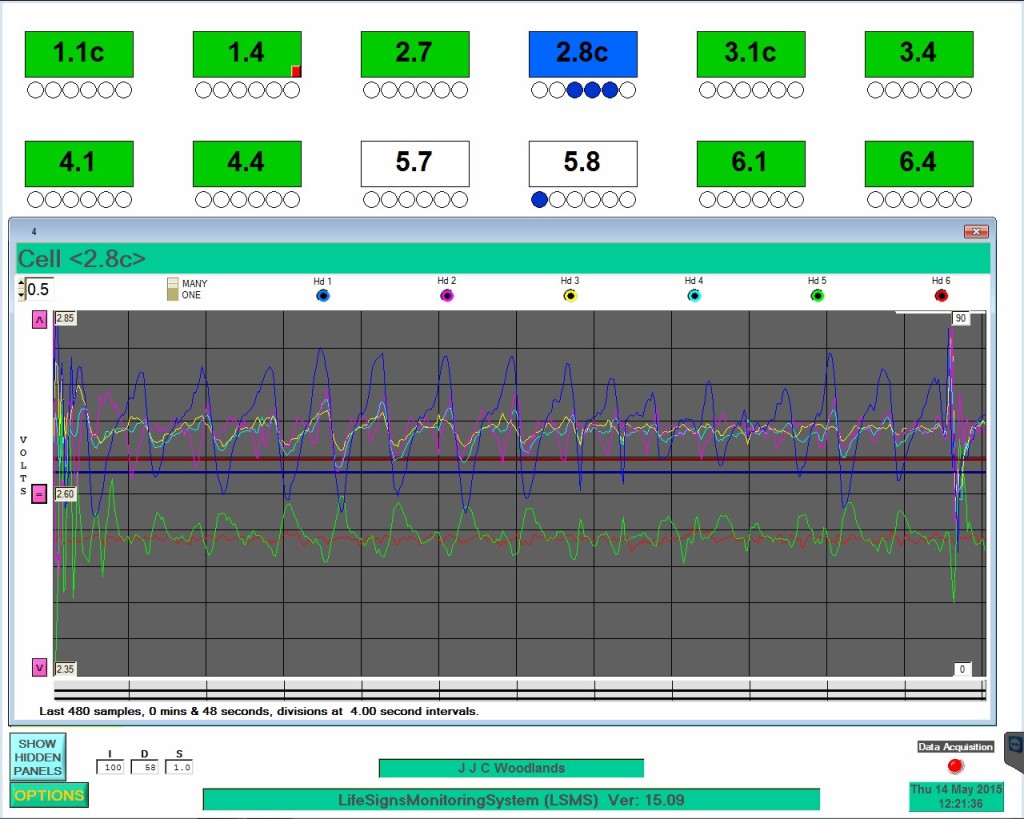LSMS/COMS has been in constant development and improvement for over 17 years. The requirement was outlined originally by Hertfordshire Constabulary. The system was briefly known as the Cell Breathing Monitor, but quickly became the Life Signs Monitoring System (LSMS). The current name “COMS” was introduced when the control software became PC based and to underline the capability to monitor both cell occupant AND occupancy to ensure a complete Audit Trail. COMS24 denotes the microwave frequency of the latest system, which is more sensitive and importantly does not require screening of the cells thereby reducing cost and simplifying installation. The system has been installed in over 80 locations, covering over 390 cells. During that time it has been formally and successfully trialed by the following organisations: To most users the system is simply know as “LifeSigns” – it has become the Hoover/Biro/Fridge of non-invasive breathing monitoring. The System uses up to six sensors within the cell to detect movement. ‘Movement’ constitutes any level, down to chest movement caused by breathing, even in deep sleep and under bedding. The monitoring capabilities of the system warn custody staff of occupants’ potential problems, thus providing an increased awareness and more time for preventative measures to be taken – thereby possibly saving lives and safeguarding careers. It is vital to remember that CCTV cannot see people breathing. Up to 32 cells can be monitored by one PC. In summary:The Life Signs Monitoring System – The Cell Occupant and Occupancy Monitoring System
